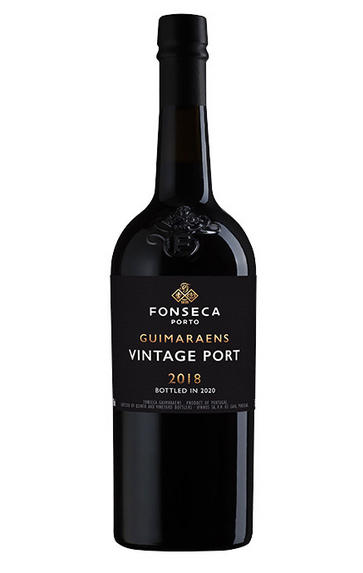
2018 Fonseca, Guimaraens, Port, Portugal
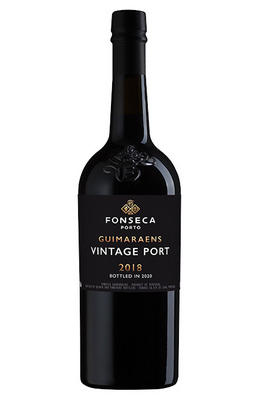
Critics reviews
Neal Martin, Vinous.com (February 2021)
Jancis Robinson MW, jancisrobinson.com (August 2020)
Richard Mayson – richardmayson.com (February 2021)
About this WINE
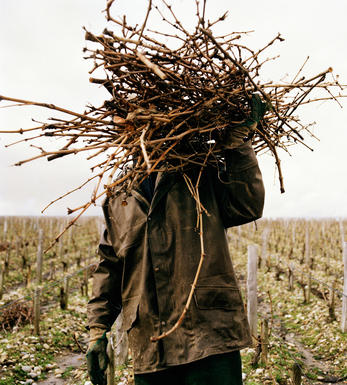
Fonseca
Fonseca was founded in 1822 when Manuel Pedro Guimaraens acquired control of the Fonseca & Monteiro Company. As a condition of the sale, Fonseca insisted that his name be retained.
Shortly after, Manuel Pedro Guimaraens was forced to flee Portugal due to the civil war in an empty port wine cask. During this period, Fonseca grew rapidly in reputation and importance and by 1840 the firm had become the second largest shipper of Port Wine.
Today Fonseca Guimaraens is still a family wine shipper with David Guimaraens being the 6th generation involved in the industry.
In the last 40 years, Fonseca (the middle syllable rhymes with "tech") has been the most "on form" in Vintage Port years, with resounding successes in 1963, 1970, 1977, 1985, 1992, 1994 and 1997, which has created demand and, as a result, it can command the highest prices.
Fonseca is, in fact, a partner to its rival, Taylor's though the two brands have kept their separate identities. Long-lived, the vintage wines are renowned for their quality and intensity of fruit, sheer opulence, structure and balance to last for decades. Fonseca is without doubt a top name and one that everyone should aspire to try.
Much of the fruit used for Fonseca’s Vintage Port comes from Quinta do Panascal, purchased in 1978 which then undertook a substantial programme of renovation and development leading to the addition of Quinta do Val dos Muros in 1985. The property now comprises just over 76 hectares of which 44 hectares is under vine producing 858 hectolitres of Port.
All of the grapes are foot trodden in granite lagares situated on the property. Wines from the Tavora Valley are credited with their solid backbone and concentration seen in the Panascal Single Quinta Vintage Port that Fonseca produces when a general vintage declaration is not made.
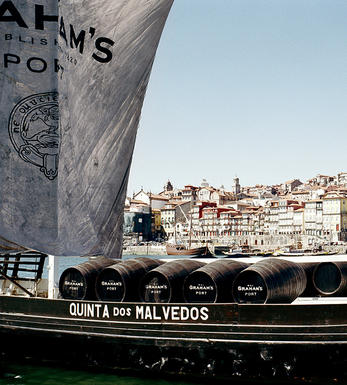
Vintage Port
Vintage Port accounts for only a small percentage of the total Port production - which includes Tawny, Ruby, Late Bottled Vintage, Single Quinta Vintage styles, among others - but is the finest, longest-lived and most expensive style that is produced. The best are as good as any wine in existence.
With the exception of legendary vineyards like Quinta do Noval Nacional and Quinta do Vesuvio, Vintage Port is made from a blend of wines from a producer's finest plots. It is aged for around 18 months in wooden casks before bottling; from then on the watch-word is patience. At least 15 years ageing – and for the top wines it will be significantly longer – is required before the tannins, spirit and fruit are fully integrated. Indeed, the finest examples can last well over 50 years.
Vintage Port is only made in exceptional years (normally around three times per decade) with considerable stylistic variation between different years and shippers. However, they all share a sweet, warming, spicy richness, power and complexity. In other good but not great vintages, many shippers produce a Single Quinta Vintage Port from their finest vineyard. These are made in the same way and have the same style as Vintage Port but tend to mature faster and are less profound. All Vintage Port throws a sediment as it matures, and thus requires decanting.
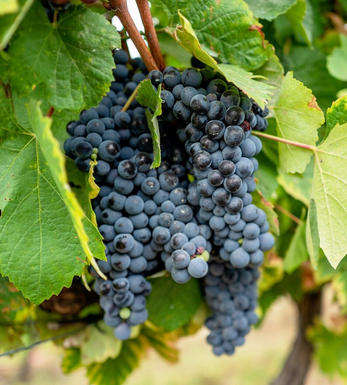
Port Blend
There are around 40 different grape varieties permitted in the production of Port - however the vast majority of Ports are produced from a blend of 5 grapes - Touriga Nacional, Touriga Francesca, Tinta Barroca, Tinta Roriz, and Tinto Cão.
Touriga Nacional produces small, dark-skinned grapes that produce opaque black wines of great extract and high tannins - it gives grip, body, and structure to the blend.
Touriga Franca has a thinner skin and consequently produces wines lighter in colour and tannins than Touriga Nacional. It contributes fruit, aroma, suppleness and roundness.
Tinta Roriz is the Portuguese name for Tempranillo and its high sugar content and low acidity contribute colour and fruit.
Tinta Barroca which is normally grown at highish altitudes and on north-facing slopes, is prized for producing wines of delicacy, finesse and with smooth, velvety fruit. It brings elegance and sweet, ripe fruit to the final blend.
Finally Tinto Cão produces fine and complex wines, though it is probably the least important of the 5 grapes as its painfully small yields have reduced plantings to almost insignificant levels.


Buying options
Add to wishlist
Description
A meticulously selected blend from three sites gives us this really lovely example of wine-maker David Guimaraens’ craft at its best. A vintage like 2018 lends itself to wines like these, for their extraordinary value and the quality drinking they will bring. At this stage the wine displays a sleek, svelte style concealing blue and black fruits as well as a beguiling hint of orange on the nose. This is a beauty, all the depth and class to keep it improving to its peak 2025-2050+, there’s so much to love and enjoy at any stage of its life.
Tom Cave, Cellar Plan Manager (February 2021)
Impenetrable purple-black at the centre, with a narrow band of violet on the rim. The nose is dense and compact, with impressive depth and background. The fruit quality is superb, a luscious blend of black and red berry aromas which is the hallmark feature of Fonseca’s vintage ports, mingled with notes of dark chocolate. Around this core of powerful, complex fruit is an aura of balsamic, minty scents. Although the nose is sensuous and seductive, there is an attractive firm edge, provided by graphite and a flinty minerality. The first impression on the palate is of silky smoothness but the tannins suddenly burst out on the finish with an assertive pungency and a wire of acidity runs through the wine to give it a lively freshness. There is an abundance of crisp, berry fruit flavour which carries into the long finish. This superb Guimaraens Vintage Port displays stamina and depth but is sufficiently supple and expressive for early drinking.
David Guimaraens, Head Winemaker (February 2021)
wine at a glance
Delivery and quality guarantee